Growing and processing wood products is a key economic development direction, multi-purpose of the province. However, the development of the wood processing industry is spontaneous, following the short-term needs of the processing market without long-term calculation.
Lao Cai province currently has more than 79,000 hectares of planted production forests, of which nearly 9,500 hectares have become forests, with an average timber output of 300,000 m3 /year. Although the whole province has 345 establishments producing, trading, processing forest products and making household wooden furniture, the scale is mainly small and medium; the processing technology level is average, and the raw material consumption is high.
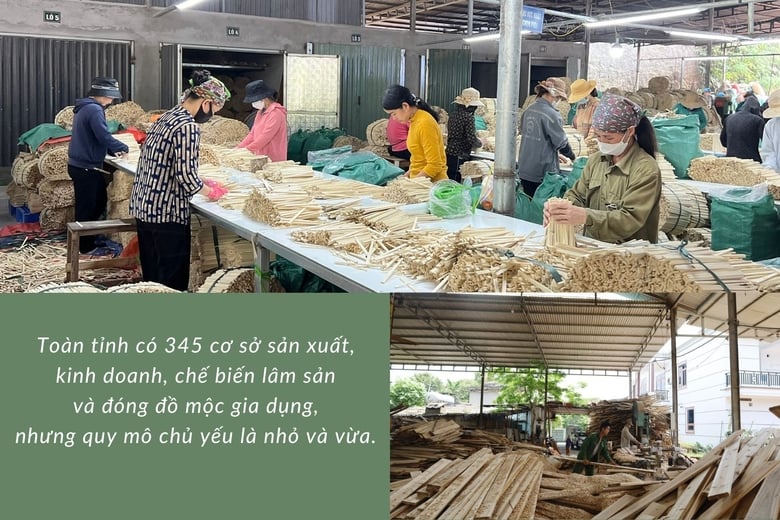
The processed wood products are mainly peeled boards, plywood, sawn timber, household furniture, pellets, chopsticks. There are very few businesses that have built a brand to directly export products abroad, the rest sell to intermediary companies in Hanoi and Hai Phong. Peeled wood products are supplied in large quantities to Chinese traders or sold to some domestic businesses for processing, finishing products and then exporting to other countries. Therefore, the product value is low, the output is unstable.
On average, every day, Mr. Ta Anh Tuan's wood production facility in Xuan Quang commune (Bao Thang) consumes more than 50 m3 of raw wood to produce about 800 kg of wooden chopsticks and 20 m3 of peeled boards. Mr. Tuan said: The output products of the facility are mainly in raw form and then exported to other companies in the lowlands for further processing. Due to the dependence on intermediaries, the selling price is unstable, sometimes it is difficult to predict the market, sometimes the products are left behind and production has to stop.
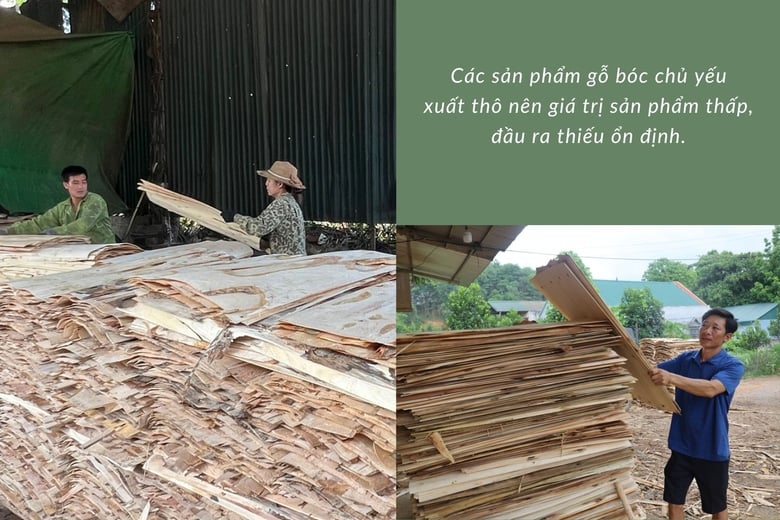
In addition, the rapid increase in the number of small and medium-sized wood processing facilities has led to an imbalance between supply and demand in the supply of input materials. In many localities, processing capacity has exceeded the ability to supply raw materials, leading to over-exploitation and the use of under-aged trees, causing waste and high loss rates. At times, wood processing facilities lack raw materials, affecting the production process. The number of processing facilities is large but they only focus on a few raw processed products such as peeled boards, plywood, and sawn timber with low added value.
Ensuring raw material sources is an important factor to attract large enterprises to invest in forest product processing factories, create sustainable value chains, and build forest product brands. It is necessary to improve the quality of raw wood, focusing on improving the quality of planted forests, focusing on planting and converting large timber forests according to the roadmap. FSC sustainable forest certification is considered a marketing tool to support penetration into international markets and achieve optimal prices.
- Mr. Vu Hong Diep, Deputy Head of Provincial Forest Protection Department.
According to Mr. Vu Hong Diep, to create high-quality, high-value-added wooden products, it requires investment in capital, human resources and processing technology. Enterprises need to apply science and technology, especially 4.0 technology and advanced quality management systems to forest product processing to control quality, safety and traceability of products. Improve the quality of human resources for agricultural product processing by training and improving the qualifications of business management staff and workers.
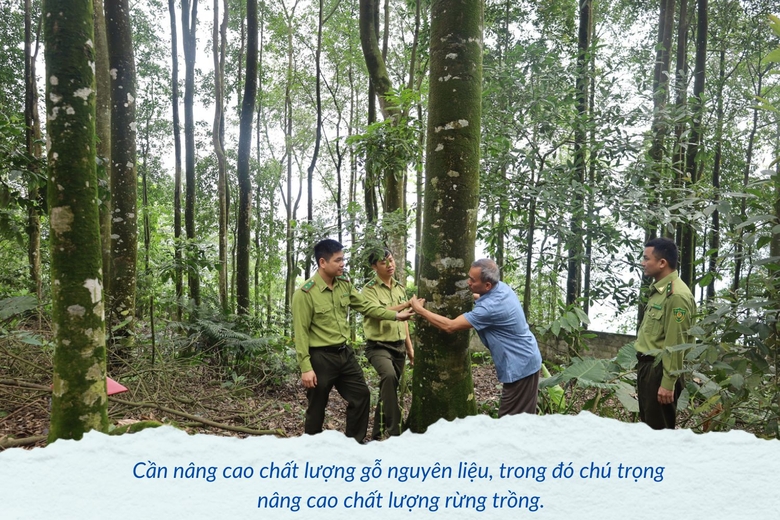
It is necessary to promote research on market development trends and consumption needs for processed wood products and other forest products in the direction of "shortcuts and anticipation", encouraging the production and export of refined and finished products. It is necessary to aim for multiple goals, both increasing export turnover and meeting domestic consumption needs. "For the domestic market, it is necessary to promote distribution channels, focusing on producing products targeting markets in big cities and neighboring provinces. For the international market, promote trade promotion, participate in fair programs, and cooperate with other organizations to produce and seek markets for exported forest products," said Mr. Diep.
Source link






![[Photo] Prime Minister Pham Minh Chinh chaired a meeting of the Steering Committee on the arrangement of public service units under ministries, branches and localities.](https://vphoto.vietnam.vn/thumb/1200x675/vietnam/resource/IMAGE/2025/10/06/1759767137532_dsc-8743-jpg.webp)
![[Photo] Prime Minister Pham Minh Chinh chairs a meeting of the Government Standing Committee to remove obstacles for projects.](https://vphoto.vietnam.vn/thumb/1200x675/vietnam/resource/IMAGE/2025/10/06/1759768638313_dsc-9023-jpg.webp)
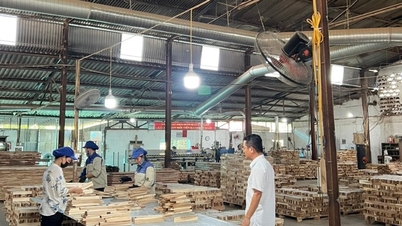








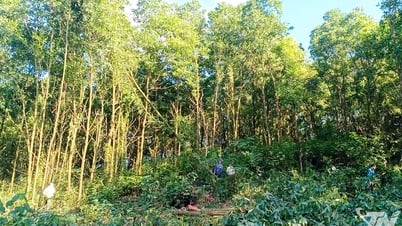



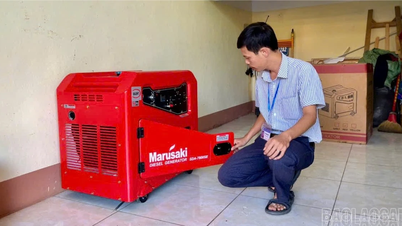



























































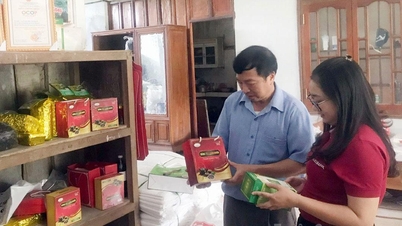




















Comment (0)